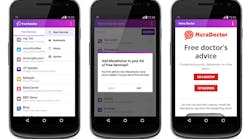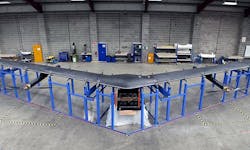A friend and I used to debate about the future of tablets. This was about five or six years ago before we had Microsoft Surface Pro 3, iPad Pro, or any of the new hybrid laptops that have hit the market in recent years. She would argue that a tablet would never replace a laptop. Her main argument was that the lack of a USB port or CD/DVD slot (yes, we still cared about CDs and DVDs back then) on then modern tablets hindered them from becoming her main computing device. The offline access to media and files was crucial for her work and entertainment.
My counter argument was to use cloud service. At the time I had a Dropbox account with 4 GBs worth of storage. There I placed documents, music, and even small, compressed movie files. I could access them from anywhere and did not have to worry about my iPad running out of space. But her response strikes at the real heart of the problem: “Yes, but is there internet everywhere you go?”
Even in today’s modern age of cloud services and Internet-based programs, we still lack widespread Internet. I currently use Microsoft Office 365 service that gives me access to 1 TB of cloud service and Microsoft Office everywhere I need it. I start writing my documents in one place and finish them in another. In most modern countries—mainly in the U.S. and much of Europe—we are constantly covered by the Internet. We have our own networks at home, we rely on public networks like Starbucks, and we have smartphones that can produce their own hotspot connection. However, for technology like USB flash drives to go the way of the dinosaur and for tablets to take over the laptop market, we need 100% worldwide Internet coverage.
Infrastructure and the reach of current technology are not able to meet demand. In the United States, we are behind the 4G LTE standards of Europe. Our infrastructure is playing catch-up, constructing more LTE towers in recent years to fulfill the demand of faster mobile Internet. But at least we have an existing infrastructure to build upon. According to the Facebook Project “internet.org,” two-thirds of the world is without access to the Internet.
The goal of Facebook’s internet.org is to establish not just Internet connection, but Internet services to the far reaches of the world. Free Basics by Facebook provides services in markets where Internet access is too expensive. It allows people to freely browse health, employment, and local information. Free Basics is currently available in parts of Africa, Latin America, and Asia.
But what about places that don’t have access to Internet networks at all? Approximately 10% of the world’s current population lives in a place without an existing infrastructure. That is where Facebook’s next project is truly innovative. The company has built Aquila, a solar-powered drone that can beam down Internet coverage over an area.
The carbon-fiber UAV has the ability to send Internet services at speeds of 10 GBs per second. The drone is has a wingspan of a Boeing 737, is lighter than an average car, and will fly in the stratosphere between 60,000 to 90,000 feet. Aquila can stay in the air for 90 days without needing maintenance. It will create a network by bouncing an Internet signal from a home base off of two other Aquila drones, creating network coverage for the homes below.
Once we can achieve worldwide Internet coverage, then we will no longer need USB drives or DVDs. And my friend will finally buy a tablet.
Learn more about Aquila in the following video, curated by Engineering TV:


